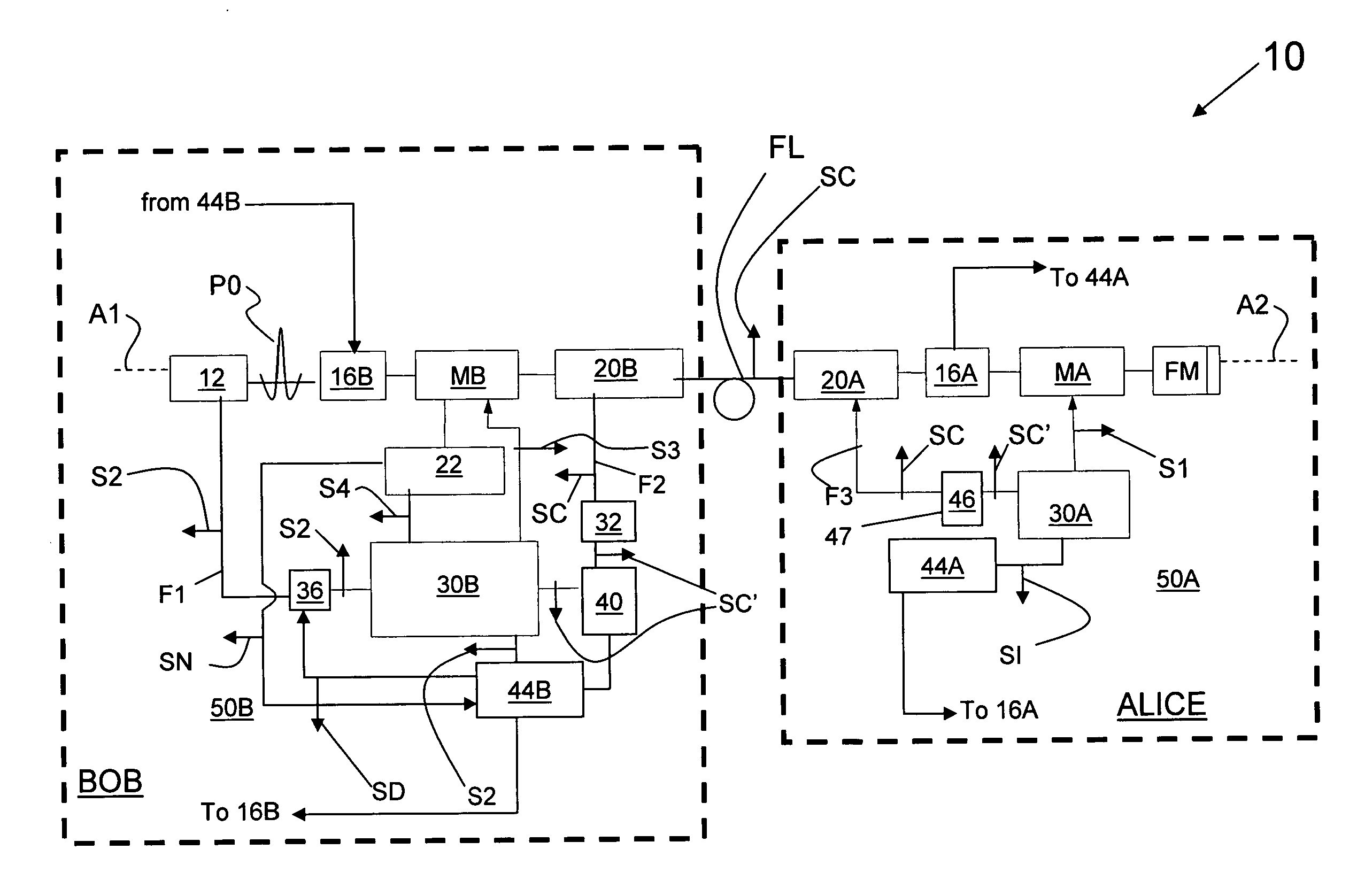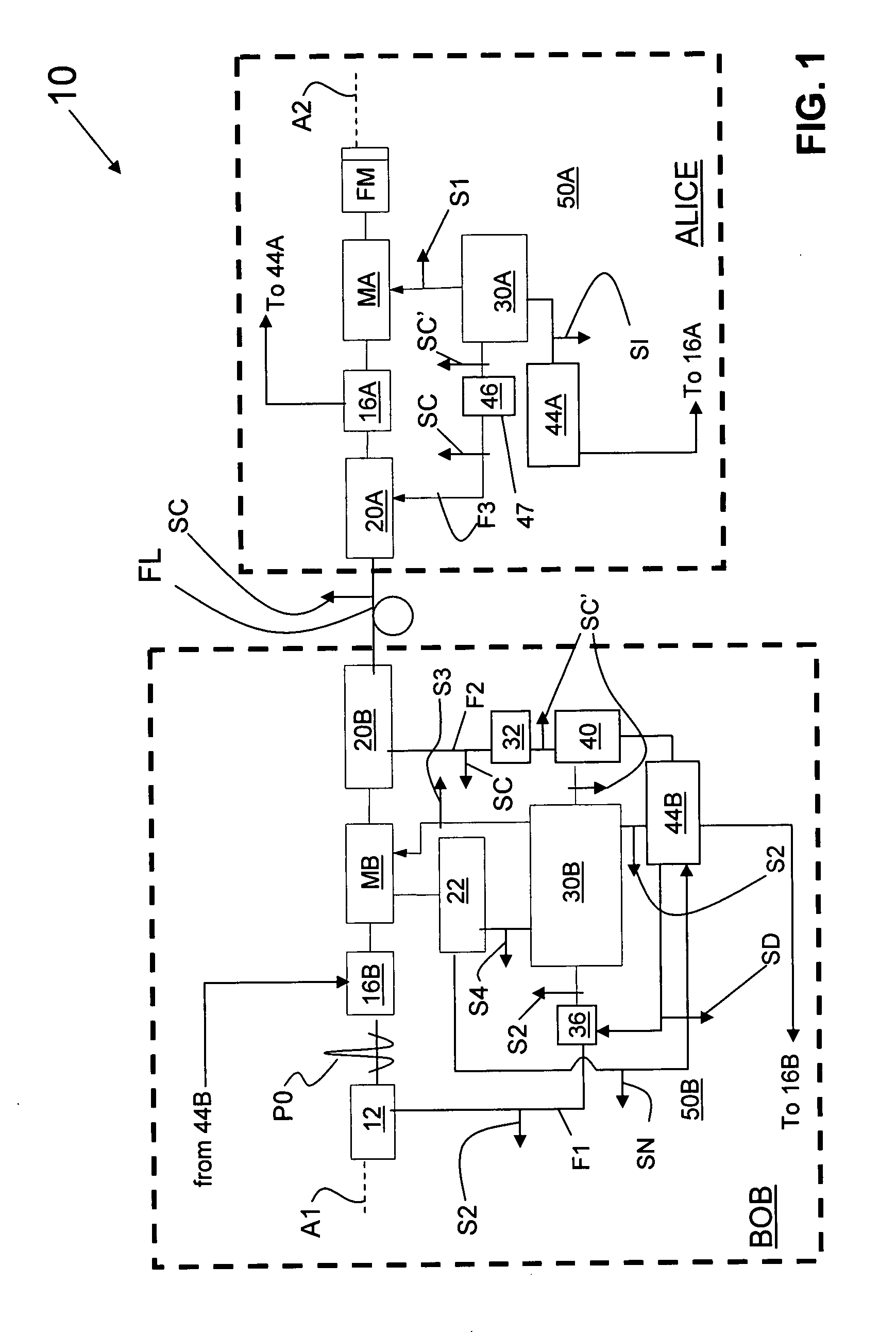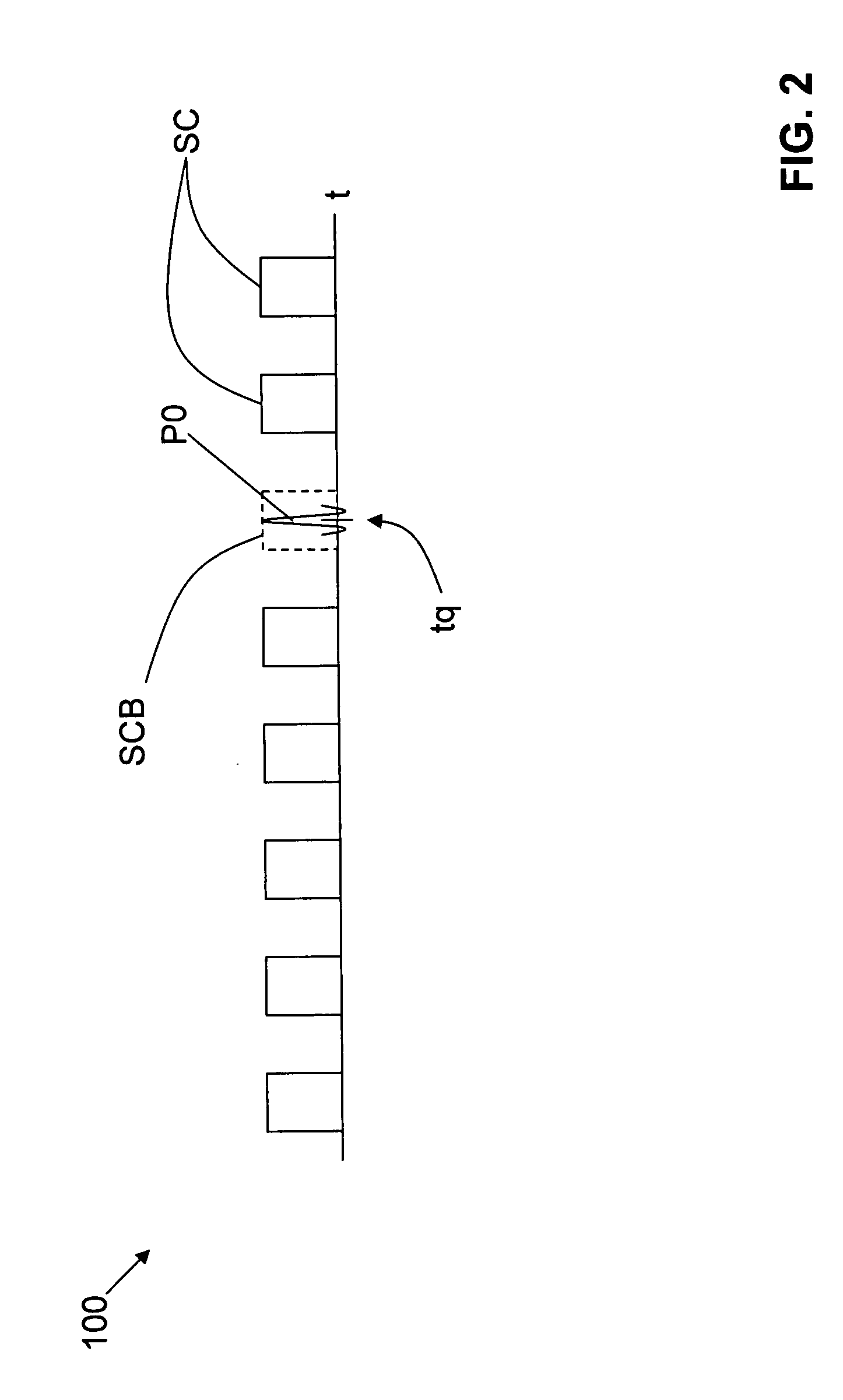One-way synchronization of a two-way QKD system
a two-way synchronization and qkd technology, applied in the field of quantum cryptography, can solve problems such as reducing the chance of obtaining false detection
- Summary
- Abstract
- Description
- Claims
- Application Information
AI Technical Summary
Benefits of technology
Problems solved by technology
Method used
Image
Examples
Embodiment Construction
[0015]FIG. 1 is a schematic diagram of a two-way QKD system 10 having two QKD stations BOB and ALICE optically coupled to one another by an optical fiber link FL of length L. The construction of the two QKD stations BOB and ALICE is described below, followed by the method of operation that allows for one-way synchronization of the two QKD stations.
BOB
[0016] With continuing reference to FIG. 1, BOB includes, in order along an optical axis A1, a quantum laser 12, a variable optical attenuator (VOA) 16B, a phase modulator unit MB, and an optical modem 20B. The term “quantum laser” is used herein to emphasize the fact that quantum laser 12 generates optical pulses P0 that serve as the quantum signals (pulses) for system 10.
[0017] Phase modulator unit MB includes a random number generator (RNG), a phase modulator and a phase modulator driver, which are not individually shown for ease of illustration. Phase modulator unit MB is adapted to impart a phase to a quantum signal passing the...
PUM
 Login to View More
Login to View More Abstract
Description
Claims
Application Information
 Login to View More
Login to View More - R&D
- Intellectual Property
- Life Sciences
- Materials
- Tech Scout
- Unparalleled Data Quality
- Higher Quality Content
- 60% Fewer Hallucinations
Browse by: Latest US Patents, China's latest patents, Technical Efficacy Thesaurus, Application Domain, Technology Topic, Popular Technical Reports.
© 2025 PatSnap. All rights reserved.Legal|Privacy policy|Modern Slavery Act Transparency Statement|Sitemap|About US| Contact US: help@patsnap.com



